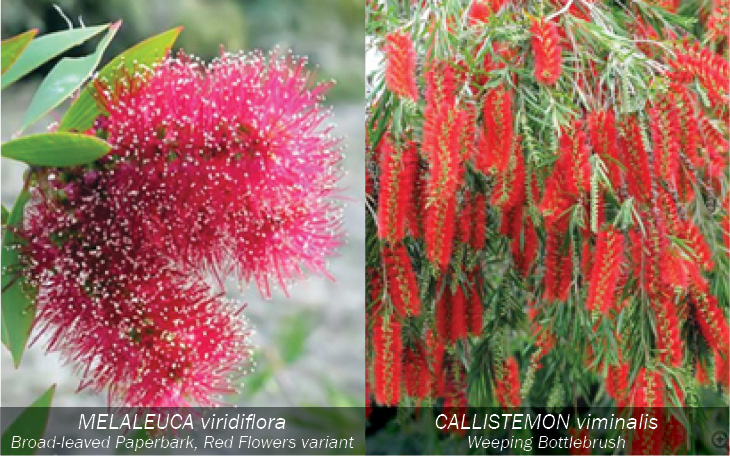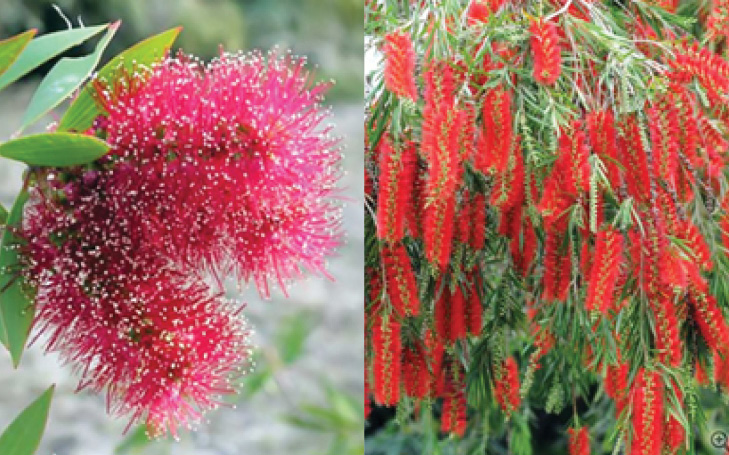Two Main Species Apply To The Title …

Most people know what a bottlebrush looks like, but did you know that there are two main species that apply to that title. The name bottlebrush can be applied to any plant that has a flower that resembles a brush for cleaning bottles. That’s the obvious part. However, several species can produce such flowers. Some grevilleas have a brush-like flower but are not considered a bottlebrush because most varieties do not, and grevillea flowers are most often pointed. Banksia are sometimes referred to as a bottlebrush, but their flowers are referred to as Candles because they are mostly upright and much larger. Grevillea and Banksia share no genera with either Callistemon or Melaleuca.
Callistemon is the most common species of bottlebrush. Melaleuca (paperbarks) are also commonly referred to as bottlebrush and share a lot of their genetic makeup. That’s why on some labels e.g. you might see; Callistemon pachyphullus (Melaleuca pachyphylla) as there are no scientific genera to distinguish one from the other. The nursery industry will most like continue to refer to the plant by whichever way they always have.
Melaleuca are also commonly referred to as the Myrtles and many of the smaller shrubs bear the title e.g. ‘Honey Myrtle’.
Bottlebrushes are often everything to everyone. They make great hedges, they have small growing varieties, weeping varieties and produce a wide range of colours from White, lemon, green, pink and a hundred shades of red.
Callistemon respond well to pruning and can be encouraged to grow quite thick and soft producing a wonderful abundance of flowers. Like most natives, they encourage birds of all kinds and size, and beneficial insects to your space.
By Chris Estreich (Green & Gold Natives Nursery)
0403 415 811 l growmynatives@gmail.com
